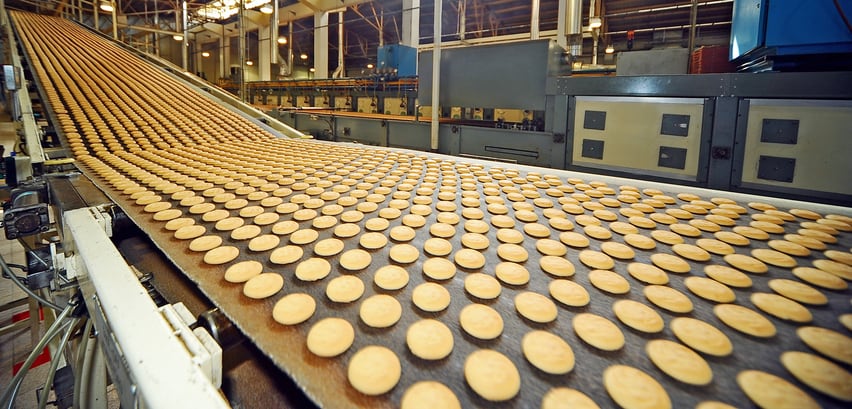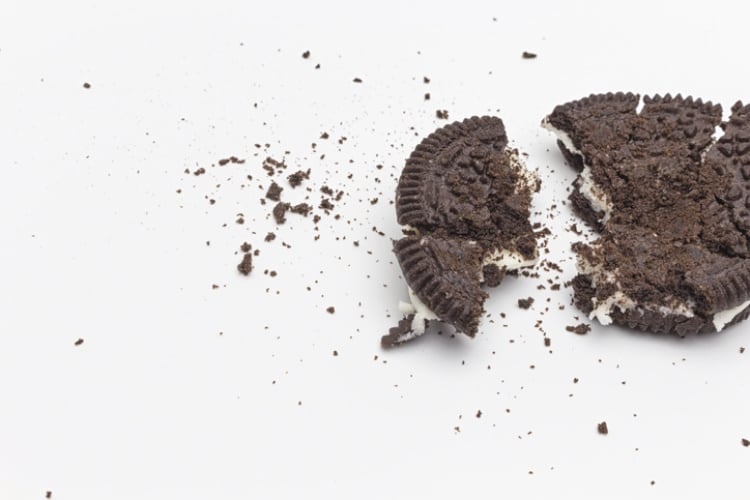Key takeaways:
- Tyson’s recall of nearly 30,000 pounds of State Fair corn dogs has escalated into a class action, underscoring how even well-managed recalls can end in court.
- The lawsuit highlights the growing legal exposure facing snack and bakery producers as food-related class actions expand beyond labeling claims to contamination cases.
- Advances in dual energy X-ray and photon counting technology are helping manufacturers improve contaminant detection — but rapid response and solid documentation remain the best legal defense.
From fairgrounds to freezer aisles, corn dogs are one of America’s most enduring snacks – quick, familiar and impossible to mistake. So when Tyson pulled nearly 30,000 pounds of its State Fair corn dogs off shelves last month, people noticed.
The Arkansas company acted fast after reports of wooden fragments turning up in the batter. No injuries were reported, but the damage was done. Once a recall like that hits the wire, it’s out there – headlines, TikToks, screenshots. And this one didn’t stop at bad press.
Less than two weeks later, Tyson was hit with a class action. Filed October 7 in the US District Court for the Northern District of Illinois, the lawsuit claims Tyson and its Hillshire Brands unit sold frozen snacks that weren’t safe to eat.
The plaintiff, Illinois resident Eric Wilim, says fragments from wooden sticks used in production found their way into finished products – State Fair Corn Dogs on a Stick and Jimmy Dean Pancakes & Sausage on a Stick – made between March 17 and September 26, 2025.
Nobody’s claiming they broke a tooth or choked. This case isn’t about injuries; it’s about trust and money. Wilim says consumers paid for snacks they couldn’t safely eat. Lawyers call it breach of warranty and unjust enrichment. For brands, it’s another reminder that a recall doesn’t end when the trucks stop rolling.
From recall to courtroom
Recalls have always been part of the business. They’re stressful, costly and bad for PR. But lately, they’ve started turning into lawsuits.
A decade ago, a company might’ve survived a contamination recall with a short apology and a few store credits. Now, consumer lawyers jump on every USDA or FDA notice that even hints at a defect. You don’t need a hospital bill – just a receipt.
That’s what’s happening here. The Tyson recall was barely a week old before lawyers were filing motions, arguing that consumers paid for something unfit to eat. No harm required – just a loss of confidence.
Once recall details go public – dates, batch codes, plant info – they become a blueprint for litigation. And that’s what should keep producers awake at night. Even when you do the right thing, the paperwork itself can fuel a claim.
Tyson’s problem wasn’t bacteria or allergens – it was foreign material. And every plant knows how hard that is to guard against. Wood, plastic, rubber, bits of metal – all potential risks that demand constant vigilance and ever-better detection systems.
Consumers don’t think about that complexity. They hear ‘wood in food’ and think: how did that happen? That’s what turns a technical hiccup into a trust issue.
And when the lawyers show up, it stops being a PR problem and becomes a legal one. The Tyson lawsuit sets a precedent no producer can ignore: if your recall makes people question safety, you could be next.
Tech that raises the bar

One area where manufacturers are investing heavily is contaminant detection. Identifying foreign materials in dense or irregular bakery and snack products is among the toughest challenges in production – and even with multiple inspection systems in place, blind spots can remain.
According to Mike Pipe, head of Product Inspection at Mettler-Toledo Product Inspection, advances in X-ray inspection are helping close those gaps. “Combining dual energy X-ray with photon counting technology can significantly improve both contaminant detection accuracy and overall business performance,” he says.
Dual energy systems use two X-ray beams of different intensities to differentiate between materials of varying densities – an approach known as material discrimination. That means smaller or lower-density contaminants, such as glass, rubber or plastic, can be picked up more clearly in complex or high-contrast products.
Photon counting takes that principle further. By capturing X-ray photons directly rather than converting them to visible light, the system delivers sharper, higher-resolution images. For producers, that clarity can make a difference in products where overlap or irregularity makes inspection difficult – think nut clusters, filled pastries or granola bars.
The technology also helps reduce false rejects, which is crucial for efficiency and sustainability. “It enables manufacturers to optimise detection for their specific application without the surge in false rejects and wasted products,” adds Pipe.
While there’s no such thing as a foolproof inspection line, tech like this is steadily raising the industry baseline – and, perhaps, keeping a few more brands out of the courtroom.
Still, even the best systems can’t catch everything. And when something does go wrong, what matters most isn’t just the tech – it’s the response.
Speed, documentation and culture still define how well a company weathers a recall. Once a contamination risk is spotted, the clock starts ticking. Regulators, retailers, consumers – they all expect fast, decisive action. Delay that response and the narrative gets away from you.
Paperwork matters, too. When the dust settles, regulators and lawyers will want to see maintenance logs, supplier checks, batch records. Weak documentation can undo even the strongest process.
Culture may be the hardest piece. Plants that encourage staff to stop the line when something looks off are the ones that avoid full-blown crises. Those that don’t usually end up making headlines.
When the recall becomes the real risk

Food-related class actions are climbing across the US. What used to focus on labeling – ‘natural’, ‘low sugar’, ‘healthy’ – now extends to contamination and recall cases. Transparency has made the data better, but it’s also made it easier to sue.
The Tyson case shows how thin the line’s become between good crisis management and legal exposure. The company recalled fast, cooperated fully and reported no injuries. Still, it’s in court – a reminder that even well-handled recalls can trigger costly litigation.
The lesson is simple: trust is fragile. In 2025 and beyond, the question isn’t whether a recall will happen, but how quickly you can prove you handled it right.
Case: Wilim v. The Hillshire Brands Co. et al., Case No. 1:25-cv-12281, filed October 7, 2025, in the U.S. District Court for the Northern District of Illinois.
How producers can limit legal fallout after a recall
Recalls can’t always be avoided, but lawsuits sometimes can. The difference comes down to speed, transparency and documentation. The first 48 hours after a recall are crucial. Every communication, audit trail and correction log becomes potential evidence if litigation follows.
Producers should move quickly to identify the source, document every step and publish clear updates. “We’re investigating” doesn’t cut it anymore. Regulators and consumers want details.
Keep supplier records tight. Make sure QA data’s traceable. Don’t sit on an issue, even a small one. The faster you act, the smaller the window for speculation – or legal action.
And above all, don’t go silent. In today’s recall environment, quiet sounds like guilt. Controlled transparency builds trust and keeps a production problem from turning into a courtroom story.





